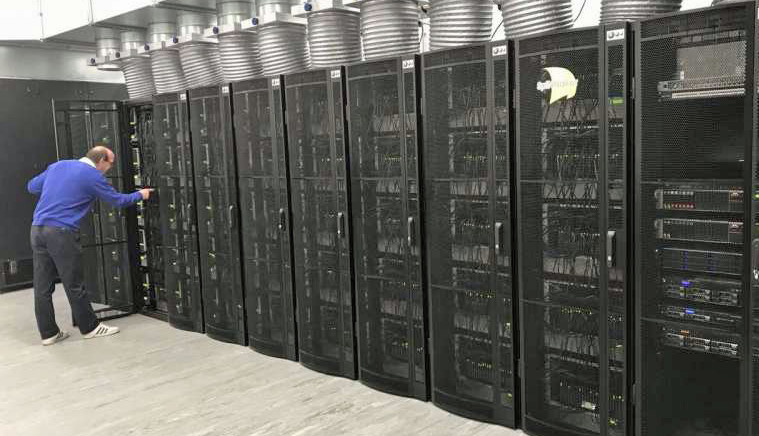1 million processor cores to mimic your brain
November 12, 2018
on
on

The world's largest neuromorphic supercomputer designed to process in a manner similar to natural brain function has finally gone live. The design is made up of 1,000,000 processor cores which the developers are hoping to upgrade to 1,000,000,000 cores in the near future, bringing it a little closer to the number of neurons currently buzzing away inside your head.
This new SpiNNNaker (Spiking Neural Network Architecture) machine has 1 million processor cores, each capable of handling more than 200 million actions per second. This machine is the result of a 15 million pound investment which funded the 20-year design phase and more than 10 year construction phase. Work on the project started at the University of Manchester's School of Computer back in 2006. The project, originally funded by the EPSRC, is now supported by the European Human Brain Project. This weekend, the processing behemoth was finally fired up for the first time.
The SpiNNNaker machine can model far more biological neurons in real time than any other machine in the world. Natural neurons are basic brain cells that communicate by emitting electrical ‘spikes’. The neuromorphic computer uses large scale computer systems to mimic these spikes. SpiNNNaker does not pass large amounts of information serially like a PC does. Instead, it mimics the brain’s massively parallel communication architecture. Billions of small pieces of information are simultaneously transmitted to thousands of different destinations. It is thought this architecture will allow it to function more like a biological brain than a conventional computer could.
The researchers hope to eventually model up to one billion neurons in real time. By comparison a mouse has a brain containing around 100 million neurons (that’s a real mouse, not the one you’re currently pushing around your desktop) and your brain is about 1000 times larger. One billion neurons is about 1% of the neurons inside your head and these 100 billion neurons are interconnected via 1 quadrillion (1015) synapses. The new computer with its millions of cores should help neuroscientists get a better understanding of how our brain works, because it allows for extremely large real-time simulations that simply overload conventional machines.
This new SpiNNNaker (Spiking Neural Network Architecture) machine has 1 million processor cores, each capable of handling more than 200 million actions per second. This machine is the result of a 15 million pound investment which funded the 20-year design phase and more than 10 year construction phase. Work on the project started at the University of Manchester's School of Computer back in 2006. The project, originally funded by the EPSRC, is now supported by the European Human Brain Project. This weekend, the processing behemoth was finally fired up for the first time.
The SpiNNNaker machine can model far more biological neurons in real time than any other machine in the world. Natural neurons are basic brain cells that communicate by emitting electrical ‘spikes’. The neuromorphic computer uses large scale computer systems to mimic these spikes. SpiNNNaker does not pass large amounts of information serially like a PC does. Instead, it mimics the brain’s massively parallel communication architecture. Billions of small pieces of information are simultaneously transmitted to thousands of different destinations. It is thought this architecture will allow it to function more like a biological brain than a conventional computer could.
The researchers hope to eventually model up to one billion neurons in real time. By comparison a mouse has a brain containing around 100 million neurons (that’s a real mouse, not the one you’re currently pushing around your desktop) and your brain is about 1000 times larger. One billion neurons is about 1% of the neurons inside your head and these 100 billion neurons are interconnected via 1 quadrillion (1015) synapses. The new computer with its millions of cores should help neuroscientists get a better understanding of how our brain works, because it allows for extremely large real-time simulations that simply overload conventional machines.
Read full article
Hide full article


Discussion (0 comments)